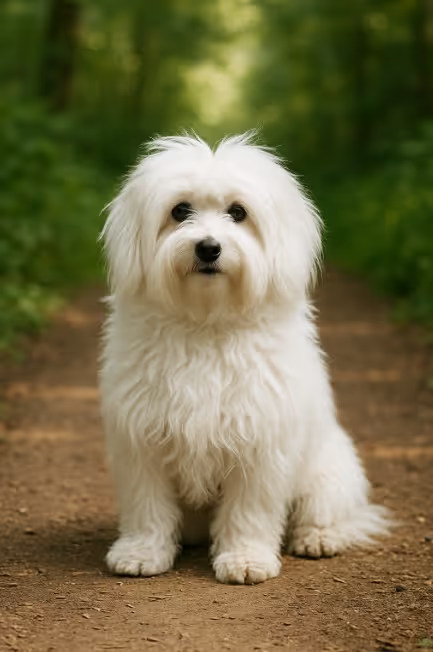The Coton de Tulear is a joyful, affectionate, and clownish small companion dog, known for its soft cotton-like coat and happy-go-lucky personality. Hailing from Madagascar, this breed thrives in households where they can be close to their people—making them excellent for both families and seniors. Wondering “Are Coton de Tulears good apartment dogs?” Absolutely—they adapt well to small spaces as long as they receive regular attention and moderate activity.

The Coton de Tulear originated in Madagascar and is named after the port city of Tulear (now Toliara). These dogs likely descended from small white dogs that swam ashore after a shipwreck and were later bred by nobles, eventually earning the nickname “Royal Dog of Madagascar.” They remained a closely guarded treasure of the island until the 20th century when they began appearing in Europe and North America.
The Coton de Tulear is a small, sturdy companion dog with a hallmark soft, cottony coat and expressive dark eyes.
Despite the lack of shedding, the Coton’s coat requires consistent care to prevent matting.
The Coton enjoys playtime and short walks, but doesn’t need intense physical activity.
These dogs are smart, eager to please, and sometimes a bit silly—making training enjoyable.
A healthy diet supports coat quality and energy levels.
A relatively healthy breed, though some hereditary conditions exist.
Choose ethical breeders or rescue groups that focus on health and proper socialization.
Are Coton de Tulears good apartment dogs?
Yes—small, adaptable, and happy indoors with regular play and interaction.
Do Cotons shed?
Very little. They’re considered low-shedding but still need frequent brushing.
Are Coton de Tulears hypoallergenic?
Yes—many allergy sufferers do well with Cotons, but individual responses vary.
How often should you groom a Coton de Tulear?
Brush at least 3–4× weekly; daily is ideal to prevent tangles and mats.
Are Cotons good with kids and other pets?
Yes—affectionate and playful, they typically get along well with all family members.
Do Coton de Tulears bark a lot?
They can be vocal when excited or left alone too long; training helps reduce excess barking.
Coton de Tulear vs Bichon Frise—what’s the difference?
Cotons have cotton-like coats vs the Bichon’s curly puffs, and tend to be quieter and more reserved.
Are Cotons hard to potty train?
Some can be stubborn—consistency and routine help significantly.
What’s special about the Coton’s coat?
It's soft and dry to the touch, like cotton—not hair or fur—making it unique among dog breeds.